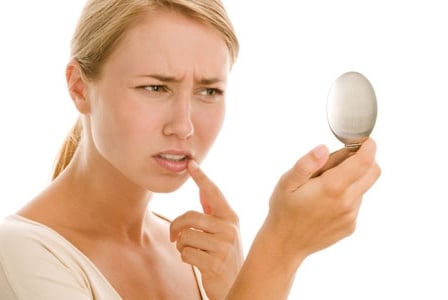
Everyone who gets them dreads them: cold sores can be as embarrassing as they are uncomfortable
Everyone who gets them dreads them: cold sores can be as embarrassing as they are uncomfortable.
A contagious infection caused by the herpes simplex virus-1 (HSV-1), cold sores are fluid-filled lesions that can last for a week or longer. (Don’t let the name fool you; the cause of genital herpes is herpes simplex virus-2.)
Cold sores usually appear near the mouth: on the lips, chin, and cheeks. Sometimes they show up in the nostrils or on the roof of the mouth or the gums. (Canker sores, by contrast, usually appear inside the cheek, under the tongue.)
Signs and symptoms
Signs and symptoms may not show up for one to three weeks after exposure to the HSV. You may experience:
- small, fluid-filled red blisters, usually near the mouth
- pain, tingling, or burning around the mouth or nose before a blister appears
- itching or sensitivity at the site before a cold sore appears
- fever
- sore throat
- swollen lymph nodes in the neck
- oozing blisters, which then form a yellow crust that eventually sloughs off to reveal pink skin underneath
Catching cold sores
HSV can be passed along by skin-to-skin contact and is highly contagious. The risk of infection is greatest from the time the blisters appear until they’ve completely dried and crusted over. However, the virus can still be spread, even after the skin has healed.
Once you’ve had an episode of HSV, the virus lies dormant in the nerve cells of your skin and can appear again at or near the original location.
Fever, menstruation, stress, fatigue, and sun exposure can all trigger a recurrence.
Ways to avoid an infection
- not kissing someone with visible sores
- not sharing personal items such as razors, toothbrushes, towels, or lip balm/stick
- not sharing drinking glasses or utensils
- washing hands frequently and thoroughly
Treatment
Cold sores can’t be cured, but there’s much you can do to help ease discomfort and speed healing.
Some strategies:
- Apply the essential oil of Melaleuca alternifolia, or tea tree oil, which has been shown to have antimicrobial activity against the herpes simplex virus. It can be applied full strength or diluted, or via a creme or ointment.
- Apply ice or warm compresses to the blisters to diminish pain.
- Let blisters heal: avoid squeezing or picking at them.
- Get plenty of rest and reduce stress.











